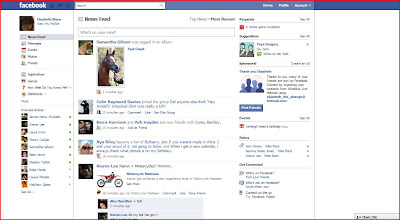
Wednesday, March 24, 2010
Information/ Instructional Design
It is said that information design "has the ability to create order out of seemingly inherit chaos." Which means that it can turn data, or facts which would ordinarily seem dull or confusing and transform it to be clearly understood, and appealing to view. It also designs information on for example a website in order to make it easier to navigate.
Information graphics, which is under the umbrella of information design involves three different elements, navigation, instructional, and statistical information. Like information design, information graphics is about revealing the data and making an audience think about the data and not the design. It is important to interactive design, because it helps web designers to use large amounts of data in a small amount of space, without confusing the viewer!
There are two examples below which demonstrate interactive websites using information design to contruct their data. The first is the website for cityrail, showing a map, that obviously a lot of data within in, yet designed in a way in which most people can understand. The second is an image from my facebook page, conveying that even though the site has so many different apps and links, simple navigation techniques has made it easy to use.


Web 2.0
- Control
- Communication with others
- Socialization
- Creativity and expression
- Higher efficiency
- Generally creates a more real and interesting environment for people to understand and rely on
In today's generation, the majority of websites come under the umbrella of 2.0. Interactive sites in fact have twice the popularity of 1.0, and increase in users every single day. Examples include:
- Facebook, Myspace, Bebo, You tube, Twitter, Ebay, Deviant Art, Blogger (coincidently), Wikipedia, Windows live Flickr, Msn, Imdb, etc.
You tube is an interactive website because it allows users to post their own videos, as well as sharing opinions and views on other peoples posts.
Facebook is interactive because eacher user is enabled to set up their own profile, crete information about themselves, as well as partipating in games, quizes, forums, and being able to communicate with other people at the same time.
Blogger is interactive for simular reasons as facebook. Profiles, or blogs (such as this one) can be set up to express views, and opinions, whilst viewing other peoples blogs, and communicating online.
Interactive design
- Blogs forums
- Internet dating websites
- Chat rooms
Online shopping websites
- Research sites, like Wiki's
- Online educational resources.
Excellent examples of interactive websites are ebay, Deviant Art, and Wikipedia. For instance, ebay allows millions of users to log on simultaneously to post products and items which they wish to sell, and control elements like the price, whether it is auction or simple sale, and who actually deserves the item. This site is very different in comparison to a site that is just text based, because not only do you receive interaction with the website itself but also with other people via the internet.


The main two elements of interactive design are:
- Instances where users are forced to respond and engage
- Both the designer and the user work together to see an effect or influence which is much greater the initial result.






